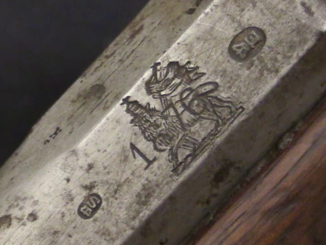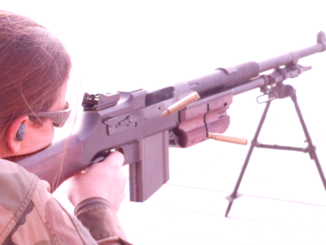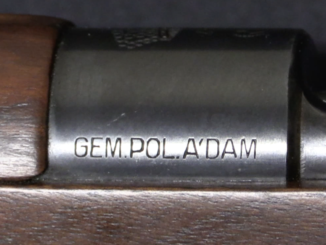Full video with reloading segment and clip solid file available here:
https://forgottenweapons.vhx.tv/videos/ep-10-beaumont-vitali-app
Black powder military rifles of the 1860s-1880s are a really enjoyable group of guns. A lot of them are relatively reasonably priced, and they are actually pretty easy to reload for. The unavailability of factory ammunition (for most, although not so much for the Trapdoor) makes them seem like a daunting prospect, but for a pretty simple investment in tools and time one can make up ammunition and have a lot of fun with rifles like this.
That’s the idea behind a new series here on black powder military rifles. Each month, my friend – and handloader – Tom and I will take out a different model to have some fun at the range and compare how they handle. And then we will show you how to make the ammunition for them. So grab your pith helmet, pause “Zulu” and join us! Today is Episode Ten: Model 1871/88 Beaumont-Vitali!




FAILURE TO EJECT —-
This question is not specifically about this rifle, but all the black powder cartridge rifles being presented, as compared to the Springfield Trapdoor model.
The Trapdoor rifles/carbines were very prone to getting a spent cartridge stuck in the chamber due to powder fouling and split cases. It took extreme effort to get the spent cartridges out, if it could actually be accomplished in time to matter in an intense combat situation. This proved quite “inconvenient” to the troopers when George A. Custer decided to take on a force many times larger than his own during his pleasure trip to the Little Big Horn River.
How would the other black powder cartridge rifles compare to the Trapdoor design as far as being prone to failure to eject and ease/speed of manually extracting the stuck cartridge.
Observe that immunity to “(…)FAILURE TO EJECT(…)” depended at combination of rifle design and cartridge design, for example .577/450 Martini–Henry https://commons.wikimedia.org/wiki/File:Snider-Martini-Enfield_Cartridges.JPG was initially made of coiled (see 2nd quarter of image) which was later changed to drawn (see 3rd quarter of image).
One problem for Custer’s troops is that they had the cavalry carbine model of the Trapdoor. This did not have the ramrod like the longer infantry version did.
See George Micino’s article at http://www.history.net Only about 2 percent of the Springfields suffered from extraction problems that day. Major Reno pointed instead to the Sioux and Cheyenne bring armed in large numbers with repeating arms.
The extraction problem was mainly one of case-head separation. The early copper cartridge cases were very prone to this, especially after being reloaded three or four times each. Yes, reloaded ammunition was standard in the U.S. Army at that time due to budget restrictions.
(see Firearms of the American West, 1866-1894, by Louis A. Garavaglia and Charles Worman, University Press of Colorado, 1997.)
This was not just in the .45-70 chambered arms. There were similar problems with .50-70 and .44 Colt Centerfire revolver ammunition.
Drawn brass cases had largely replaced the copper ones by 1875-76, except for production by the United States Cartridge Company. They continued to manufacture copper-only cases until 1878, when new company president Charles Dimon ordered the change to brass. (USC continued in business until the early 1900s when it was bought out by Winchester-Olin.)
The real cartridge case problem was in the British Army, which continued using wrapped copper foil cartridges with iron “battery cup” heads (rather like a shotgun shell) in the .577 Snider and .577/.450 Martini-Henry rifles until the mid-1880s. The British defeats at Isandhlwana and Majuba Hill (the latter known to some historians as the “British Little Big horn”) were directly impacted by case failures that often disabled rifles.
The reason they “stuck” with the coiled-copper “hybrid” case were partly excessive British patriotism (It was considered an Enfield lock invention) and partly that Parliament spent two decades refusing to give the Army the budget to upgrade their cartridge-production facilities.
In the end, the first drawn-brass centerfire cartridge cases made in Britain came from the private Kynoch firm in 1877. For the various Webley and other brand “Bull Dog” pocket revolvers in .32, .38, and .45 Webley (short) calibers.
The Army only got drawn brass case ammunition for the .577/.450 rifles in 1884. Again, made by Kynoch.
clear ether
eon
Whether improved ammo cases had made a difference in light of the fact the camp was ill prepared for defense, ammo re supply was situated too far to the rear, and Zulu numbers were somewhere in the vicinity of 30,000 is dubious. Impeccably crafted brass casings still would not have made it to Tommy in time. As in life so in war: not everything comes down to technical minutiae.